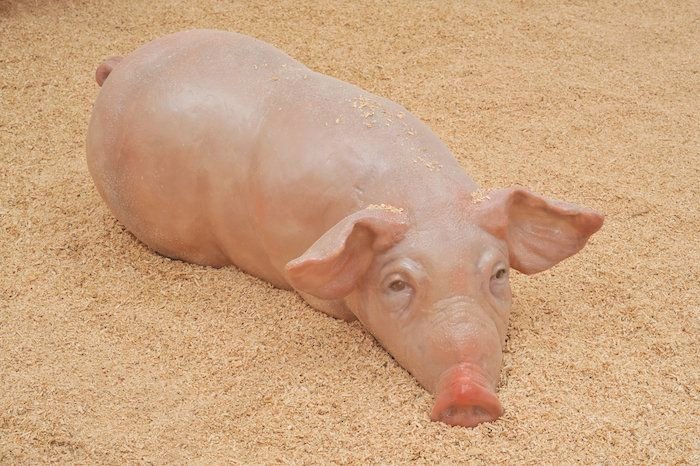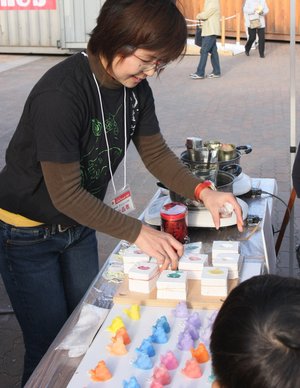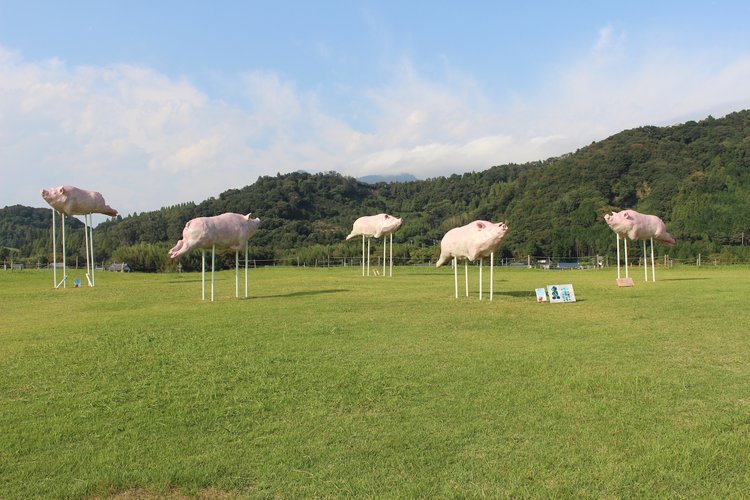Artist Close Up interview is now live.
Thank you for interviewing and supporting me.
I wish Team Artistcloseup all the best for your future.
#artistcloseup
www.artistcloseup.com/blog/interview-ono-yotonn
Interview
Aug 3
Ono Yotonn
Ono Yotonn currently resides in Japan, where she was born. Her work consists of creating and presenting sculptures mainly of pigs. In Japanese, ‘Yotonn’ means ‘pig farmer’.
Since her parents were in the pig farming business, pigs have been around her as far back as she can remember. When she was growing up, she knew that pigs were for eating, and she took it for granted that they were bred, raised, and transported away. She has strong memories of the pig farming business, having seen her parents struggle to produce live creatures.
Ono Yotonn’s sense, which could be described as producer-like, eventually became the basis for her creative activities.


What is your background and how did you start your journey in the art world?
“I’ve loved drawing since I was a child, but it was basketball that I was passionate about all through my childhood. When I retired from a basketball club in high school, I couldn’t decide on what I wanted to do. I heard that a friend of mine from my high school days was planning to enter an arts school and I was interested, so I took the entry exam. It’s not easy to enter art school in Japan. I practiced drawing every day, and after 2 years, I was finally able to go to an art school.
After entering art school, I was worried about my creative theme. I remembered the unique pig farming environment where I was born and raised, and decided to use the ‘pig’ that I know best as a motif. For 24 years since then, I have been focusing on pigs, producing and presenting original works with a message.”



Images courtesy of Koichi Hayakawa
What inspires you most?
“Nature and chance stimulate me. For example, if you draw a picture of an apple on a canvas while looking at it, you can express it in your own way. However, you can’t control the weather or the power of nature. Works using chance are close to natural phenomena. For this reason, from time to time, I try to incorporate expressions into my work that don’t quite work the way I want them to, giving my work fresh inspiration. Sometimes I get stuck in a rut with the same expressions, and get stifled by it. When this happens, the color of the work will be muddy, the shape will not be defined, and I don’t achieve a very good degree of perfection. By taking advantage of coincidence, a stifled expression can take on a form that was never imagined.
I also draw, and pencil allows me to create as I wish. With this, I dare to create a collage work with paper. Depending on the nature of the paper, the collage may not take the desired shape, but unexpected colors can be expressed by layering them together. In this way, I am seeking to create new, exciting expressions.”



Images courtesy of Takumi Ota.
What themes do you pursue? Is there an underlying message in your work?
“When it comes to pig artwork, there are many pieces that express the ‘kawaii’ (lovely, cute) aspect, but many of my pieces are very realistic. I think it’s because I’ve been able to see the texture and expression of real pigs up close. The theme of my works express, among other things, the real pigs consumed as meat from various perspectives. Today, even as the number of vegans and vegetarians is increasing worldwide, including in Japan, there are many consumers who eat pork.
In Japan, pigs were raised at home and each household prepared them as meat until the pig farming industry was revitalized in the postwar period. Compared to that era, today’s pig production has become systematized, and the process of turning pigs into meat is not visible to the average consumer. Some of today’s generation have never seen a real pig.
I hope that my work will help people feel, if only a little while, that we human beings live with the gift of life. I explore the flaws or virtues of life by projecting the human figure and character onto pigs and depicting them in my artwork. Through my art, I explore the roots of living and eating, and express the concept of ‘receiving life’ with gratitude.
I’ve been working on the theme of life, and for years I’ve been developing the concept of having my mother, who has always been the life-giving presence, as my main subject. My current artwork has finally made it happen. The passing of my mother, who has been a major influence in my life, in 2017, and the departure of my long-awaited child to heaven without a birth in 2019 has also caused me to think about life more strongly than ever. I would like to continue to create artwork on the theme of life and small lives.”

How would you describe your work?
“I continue to create three-dimensional forms in contemporary art. I aim to sculpt warm shapes using unsaturated polyester resin, silicone rubber, and other special materials as the main modeling materials. By giving a glossy texture to the pig-related pieces, I hope to express the reality of life and convey the message of the work. This is why I continue to explore materials.
In three-dimensional modeling, the selection of the material itself is considered important because the texture and constitution of the material itself determine the appearance of the work. I’ll continue to use a variety of materials to express my message to viewers.”


Images courtesy of Seri.
Which artists influence you most?
“Ron Mueck is a super realist anthropomorphic artist. He has used unsaturated polyester resin and silicone rubber materials to represent the human body as if it were alive. Mueck’s works are so elaborately crafted that they could be mistaken for real people, giving them a presence and power as if they were moving. In the process of creating his works, he contemplates materials, motifs, and forms, and throws himself into all the elements that make up the work. He engages in a dialogue that transforms each piece into a work of art. He creates the essence of art by interacting with the work, giving it power and appeal.”



What is your creative process like?
“First, I draw on paper the shape I want to turn into a three-dimensional shape. Then I make the prototype in oil or water clay. Once the clay prototype is completed, the mold is made using silicone rubber or plaster. I use a clay spatula on the finished mold to scrape out the clay. Four to five layers of resin are laminated into the hollowed-out mold to add thickness. When the resin has hardened, I remove it from the mold. It is finished after it has been polished and colored.”





What is an artist’s role in society and how do you see that evolving?
“The creative process is a connection to society, and a necessary role for artists. If we can meet viewers who resonate with our work, it may create sufficient social influence. It does not take tens of thousands of people, even one or two are enough. In order to send a message to society, I’ve sometimes created pigs that are not so cute. The goal is not to make a cute pig, but to ask questions about society through the medium of art.
I make pigs not because I like them, but because there is a meaning to creating pig works. I have something to convey to the world in my own way, even if it’s only in a small way. Pigs become products through a variety of processes that are supremely efficient to produce, and that consumers may never know about (see below). In my artwork, I express my memories of the pigs I have seen since childhood and the environment of pig farming. The image I paint is not a generic concept, contemptuous or adorable, but the real world of pig farms.
Mueck’s transcendent works in pursuit of reality move the hearts of viewers and convey a message to society and the world. Realistic expression in the modern age has the power to give people a chance not to run away from reality, but to reconsider it. Although the world is facing endless difficulties, I’m convinced that art’s power is its ability to convey to society whatever messages people want.”

Have you had any noteworthy exhibitions you’d like to share?
“In 2015, I permanently installed my flying sleeping sow and piglet artwork in the International Institute for Integrative Sleep Medicine in Japan, which studies the international neuroscience of sleep and wakefulness. The theme of sleep was chosen with the aim of creating a space that would stimulate the intellectual curiosity of researchers. Piglets feel happy when they sleep with their sows because they can have all the skin-to-skin time to themselves. I believe that humans can also relate to the happy time when they can touch each other’s skin and feel warmth. And for an animal that does not fly, flying is like dreaming. Researchers have commented that viewing artwork brings inspiration and calm to the uncertain world of scientific research.
My current exhibition is the Echigo Tsumari Art Field 2022 – Satoyama Art Zoo Exhibition is running running from July 30 – September 4, 2022. You can read about it here.”







Website: www.onoyotonn.com
Instagram: @onoyotonn
